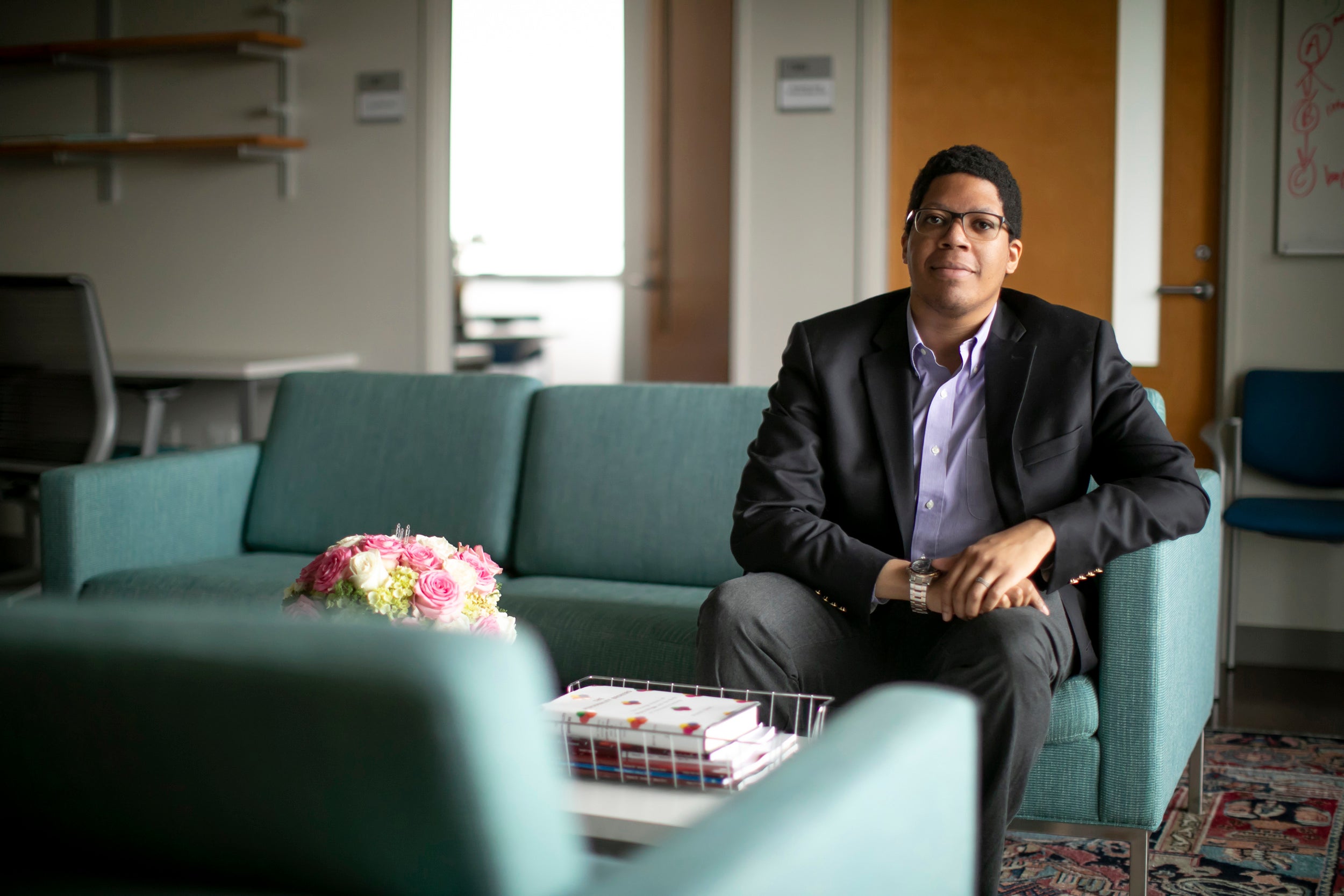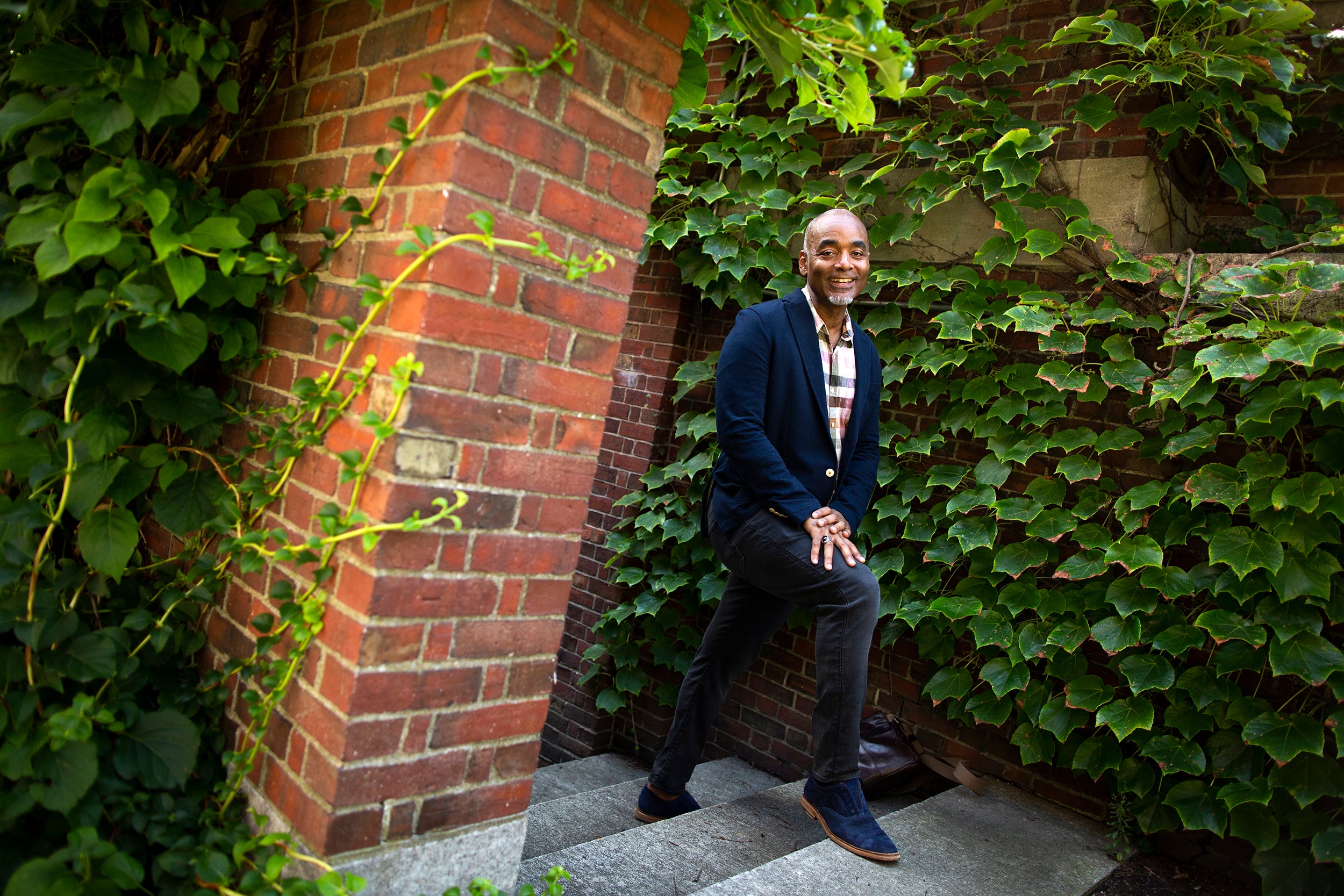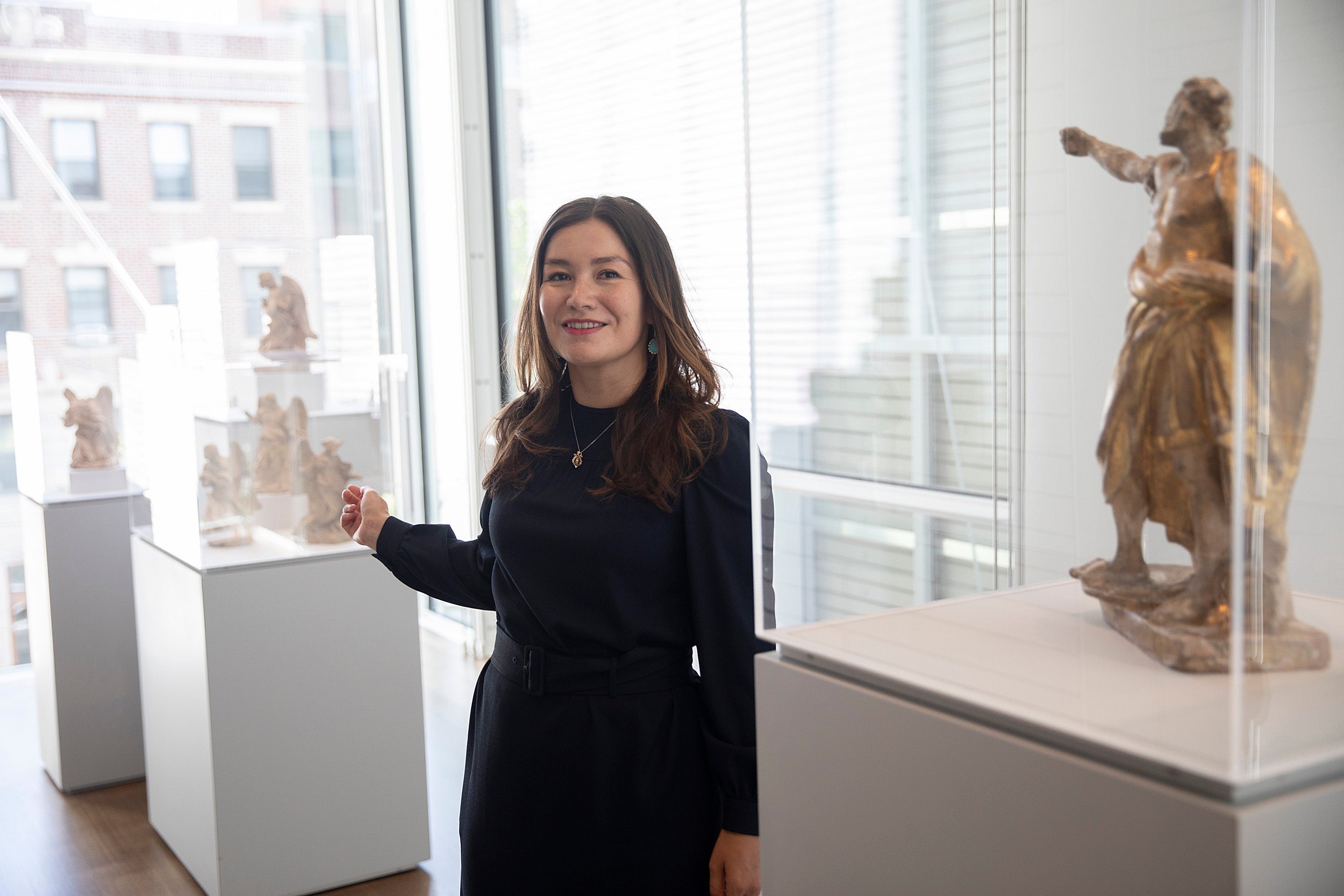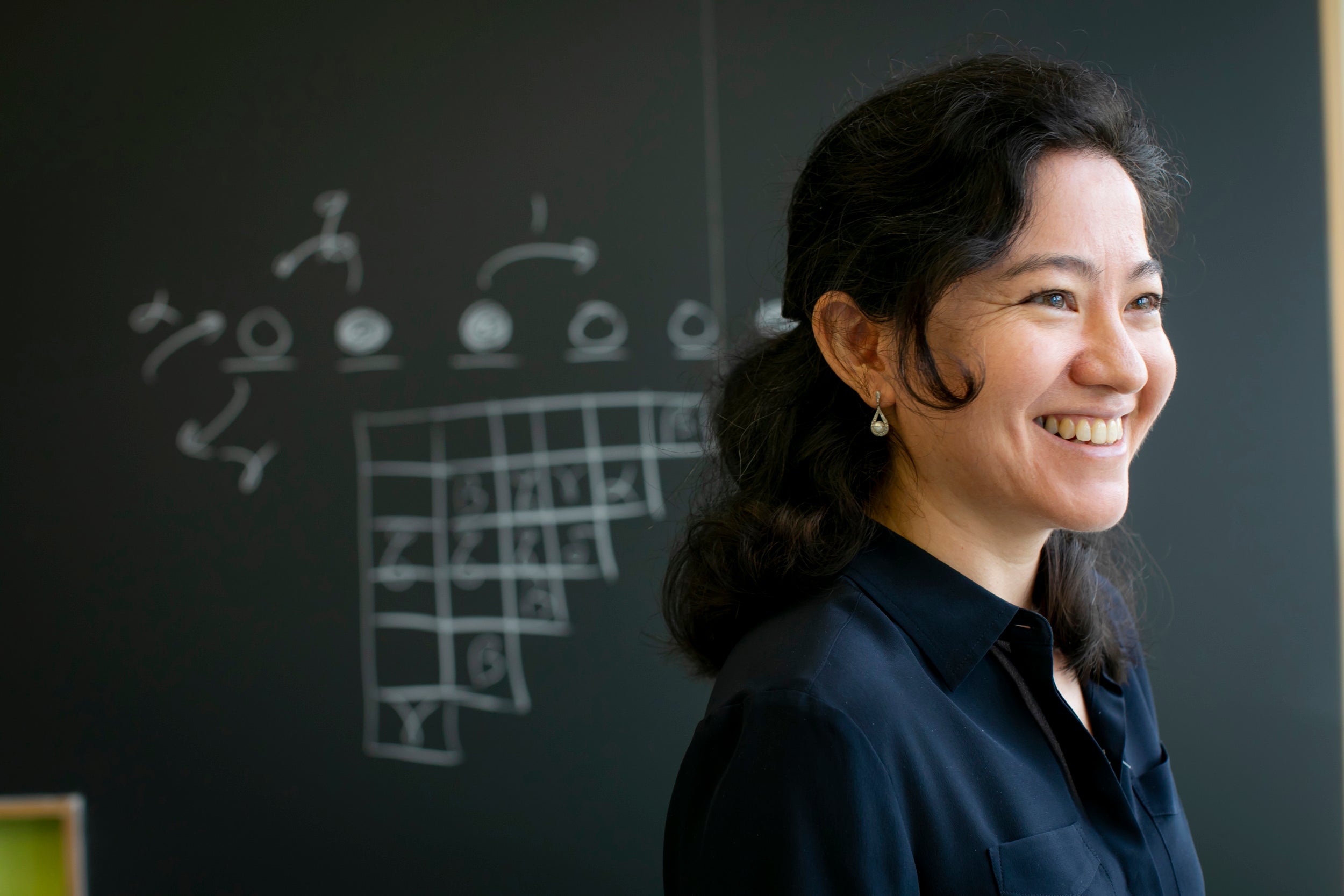
Rose Lincoln/Harvard Staff Photographer
New faculty: Ellis Monk
Along with building on his own work, sociologist hopes to ‘nurture and inspire’ young researchers
This article is part of a series introducing new faculty members.
Ellis Monk grew up outside Detroit in the home of two socially conscious parents, and got his Ph.D. at University of California at Berkeley. He arrives at Harvard as an assistant professor in the Department of Sociology with a focus on social inequality through a comparative global lens, with particular attention to race in the United States and Brazil.
A faculty associate at the Weatherhead Center for International Affairs, Monk is also interested in the sociology of the body and geometric data analysis.
Q&A
Ellis Monk
GAZETTE: How does your background inform your work?
MONK: I was fortunate to have had the University of Michigan in my backyard for undergrad. I was a late decider, but I eventually took two sociology courses late in my sophomore year — one on colonialism and one on race.
My dad grew up during Jim Crow. Racial inequality and social issues were things that were in the air in my household. Cornel West and Henry Louis Gates were mainstays in the conversation at the dinner table. I didn’t know at that age — 10 — that I would go on to pursue a degree in social science and study race, but it was something we would always discuss, and, to this day, my dad sends me news items via email.
GAZETTE: Was there a course or mentor that helped guide your path?
MONK: A graduate-level theory course I took as an undergrad with Michael Kennedy [now a professor of sociology at Brown University] left a big impression on me. A few professors took me under their wing. I would go to George Steinmetz’s office hours all the time. He would have a separate informal syllabus, and slip me more things to read. I was fortunate there were people who really nurtured me at that point. I went straight to graduate school, and had ideas of doing something on race and the comparative perspective of the U.S. and Brazil, in particular.
GAZETTE: Why the U.S. and Brazil?
MONK: My partner is Brazilian and we’ve been together nearly 20 years. Having certain experiences there and here, I didn’t always see them represented in the literature in the two countries. The other part, for me, is that the U.S. and Brazil are central to how we understand race globally. The U.S. and Brazil, after all, were two pillars of the trans-Atlantic slave trade and have deeply intertwined histories. There’s a lot at stake in understanding each of these cases on their own terms and in relation to one another.
GAZETTE: How have you begun your time here?
MONK: I’m teaching “Race and Ethnicity in Global and Comparative Perspective,” where we look at how notions of race have been used in different societies throughout time and space. We look at Japan, China, South Africa. I feel that once students get outside the U.S. and can compare more broadly, it gives them a deeper understanding of their own experiences here in the U.S. If I can serve in a similar role of mentorship to students here like the people at Michigan did for me, that would be great. That’s my selfish hope, to help nurture and inspire future generations of researchers.
The other course, “Contemporary Theory and Research,” is graduate-level, and focuses on key issues in epistemology and the philosophy of science, in addition to providing a survey of the role of theory in different areas across the social sciences such as social networks, forms of capital, race, social inequality, gender and sexuality, and post-colonial theory.
“Human perception is fine-tuned and nuanced, and our treatment by others isn’t just a matter of what we think we are, but what other people see, how other people categorize us.”
GAZETTE: Can you talk about your research, particularly your study of colorism?
MONK: My research on colorism, or skin tone stratification, is one part of my larger agenda on bodily capital. Skin tone is one aspect of the body, of physical appearance, that traditional, dichotomous measures of social differences, like Census categories, do not tap into.
Drawing inspiration from important insights on social cognition and social categorization, my research directly confronts the reality that the social world is much more complex than a lot of media discourse and even academic research would suggest. Human perception is fine-tuned and nuanced, and our treatment by others isn’t just a matter of what we think we are, but what other people see, how other people categorize us. I’m trying to harness and measure those complexities to give us a deeper understanding of mechanisms and processes that lead to inequalities of education, income, and health.
The latter topic is inspired by the work of Professor David Williams. He’s really well-known as a pioneer in research on discrimination, social stress, and health disparities. Some of my own research builds on that.
In one of my published papers, I look at colorism — this idea that people aren’t just discriminating on the basis of race alone, but on gradational and continuous differences in skin tone. My research shows that once we measure feelings of discrimination on the basis of their skin color specifically, we get a different estimate and vision of the patterns of inequality than we would get if we just thought about it dichotomously. It’s not just, “I’m black.” It’s “I’m a light-skinned person or darker-skinned person or somewhere in the middle of this continuum.” Some of these skin-color-related mental and physical health differences within the black population are actually larger than what we see if we just compare blacks and whites.
Interview has been edited and condensed.







